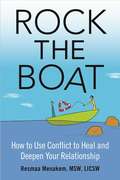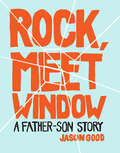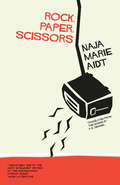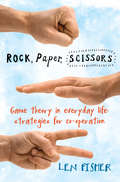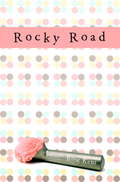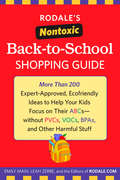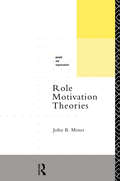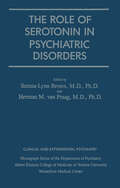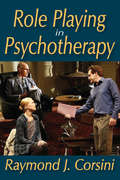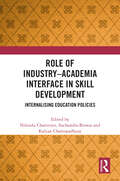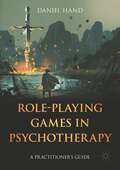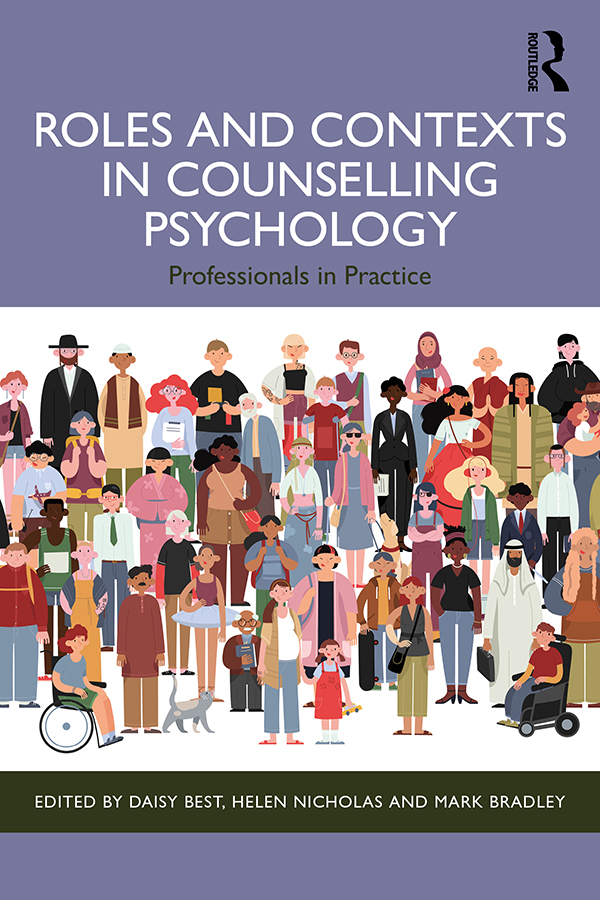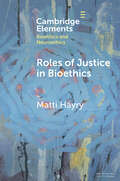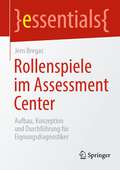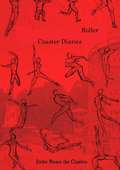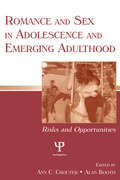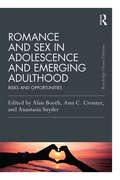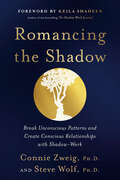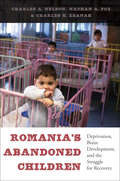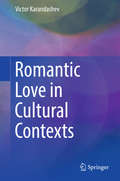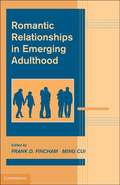- Table View
- List View
Rock the Boat: How to Use Conflict to Heal and Deepen Your Relationship
by Resmaa MenakemAn honest look at what really works to bring more intimacy and deeper trust into your relationship. Couples therapist Resmaa Manakem challenges couples not to avoid conflict—Don’t be afraid to rock the boat! The emotional transformation that results can forge a greater, more mature intimacy; a deeper trust; and a stronger bond.An honest look at what really works to bring more intimacy and deeper trust into your relationship. Couples therapist Resmaa Manakem challenges couples not to avoid conflict—Don’t be afraid to rock the boat! The emotional transformation that results can forge a greater, more mature intimacy; a deeper trust; and a stronger bond.Conflict is a natural part of any intimate relationship. Yet most couples either avoid it or try to smooth over their differences. This results in at least one partner compromising their integrity—and stunting their own growth. Gritty, often irreverent, and always practical, Rock the Boat challenges couples not to flee from conflicts, because the emotional stalemate that conflicts produce creates an opportunity for profound transformation. This transformation affirms each partner’s individuality while forging a more mature intimacy, a greater trust, and a deeper bond. Rock the Boat challenges the idea that conflict between partners is unhealthy or something to avoid. Instead, it encourages both people to stand by what they need and who they are—but to do so with compassion rather than competitiveness or vengefulness. This is the purpose of an intimate relationship: to create an atmosphere where both people learn to grow up and mature in their relationship by appreciating each other’s individual needs in a caring and mature way.Author Resmaa Menakem, a licensed clinical social worker specializing in couples therapy, addresses key factors in making this happen, including accepting discomfort and uncertainty; honesty and openness about sex, money, kids, and in-laws; recognizing when conflict might escalate into violence or abuse; and, when appropriate, finding and working with a good therapist.Rock the Boat is not about ideals, or what we hope or imagine relationships to be. It's an honest, unflinching look at what actually works.
Rock, Meet Window: A Father-Son Story
by Jason GoodA dying man’s son reflects on their relationship and fatherhood as he considers how to raise his own two boys in this funny, poignant memoir.Humorist and family-man Jason Good is an only child with an atypical story to tell. His isn’t the usual rant about how hard it is to be a modern father or a tale about a damaging relationship with his father. Jason grew up with a charismatic, communicative, affectionate, and frustrated political science professor for a father—a man who taught him most everything about how to be a dad, how to live. Jason was figuring out how to parent his own two young boys when his dad was diagnosed with cancer and told he had nine months to live. That moment, and the year that followed, inspired Jason to tell the story of something he had always taken for granted: how his father had earned his true friendship and admiration in adulthood by the way he had parented him to manhood.Rock, Meet Window shows how an imperfect father can be perfection in all the ways that matter in the end, moving us to alternately hoot and become misty-eyed through his retelling of the friction points and lessons learned. Ultimately, this book inspires us to reconsider our own relationships and to appreciate the power of fatherhood.“A vantage point on the average American family that is sweet, funny, and deep. Good builds a world you want to linger in for a while and a family you root for until the very end.” —Parents Magazine
Rock, Paper, Scissors
by K. E. Semmel Naja Marie Aidt"The emotions unleashed in this tale . . . are painfully universal. Yet you know exactly where in the universe you are. This is the hallmark of great short stories, from Chekhov's portraits of discontented Russians to Joyce's struggling Dubliners."-Radhika Jones, TimeNaja Marie Aidt's long-awaited first novel is a breathtaking page-turner and complex portrait of a man whose life slowly devolves into one of violence and jealousy.Rock, Paper, Scissors opens shortly after the death of Thomas and Jenny's criminal father. While trying to fix a toaster that he left behind, Thomas discovers a secret, setting into motion a series of events leading to the dissolution of his life, and plunging him into a dark, shadowy underworld of violence and betrayal.A gripping story written with a poet's sensibility and attention to language, Rock, Paper, Scissors showcases all of Aidt's gifts and will greatly expand the readership for one of Denmark's most decorated and beloved writers.Naja Marie Aidt was born in Greenland and raised in Copenhagen. She is the author of seven collections of poetry and five short story collections, including Baboon (Two Lines Press), which received the Nordic Council's Literature Prize and the Danish Critics Prize for Literature. Rock, Paper, Scissors is her first novel.K. E. Semmel is a writer and translator whose work has appeared in Ontario Review, the Washington Post, and elsewhere. His translations include books by Karin Fossum, Erik Valeur, Jussi Adler-Olsen, and Simon Fruelund.
Rock, Paper, Scissors: Game Theory in Everyday Life: Strategies for Co-operation
by Len FisherGame Theory is the study of co-operation and the underlying strategies that shape human behaviour. In Rock, Paper, Scissors, Len Fisher unearths the wide-ranging applications for this science, and the ways we can use its discoveries to find effective means to co-operate in daily life. Whether we want to understand where a shared supply of teaspoons disappears to, or why countries take themselves to the brink of nuclear war, Game Theory reveals the decision-making process.Len Fisher’s writing brings this science of interaction to life with anecdotes and applications that are sure to spark the imagination and give you pause for thought. Dealing with collaboration, co-operation, completion and confrontation, Rock, Paper, Scissors is essential reading for anyone interest in what it takes to get people to work together.
Rocky Road
by Rose Kent<P>Ice cream warms the heart, no matter what the weather. That's the Dobson family motto. Whenever things get tough, they break out the special heart-shaped bowls and make sundaes. The road has been especially rocky lately for Tess and her deaf little brother, Jordan. Their plucky Texan mother talks big, but her get-rich-quick business schemes have only landed them in serious financial hot water. <P>Ma's newest idea is drastic. She abruptly moves the family to snowy Schenectady, New York, where she will use the last of their savings to open her dream business: an ice cream shop. (Too bad the only place she could find an apartment is in a senior citizens' complex. ) Tess wants to be excited about this plan, but life in Schenectady is full of new worries. Who will buy ice cream in their shop's run-down neighborhood? What will happen when their money runs out? Worst of all is Ma herself-she's famous for her boundless energy and grandiose ideas, but only Tess and Jordan know about the dark days when she crashes and can't get out of bed. And Tess can't seem to find the right words to talk to Ma about it. <P>This moving story of family, community, and ice cream proves that with a little help from the people around us, life really can be sweet-and a little nutty-just like Rocky Road.
Rodale's Nontoxic Back-to-School Shopping Guide: More Than 200 Expert-Approved, Ecofriendly Ideas to Help Your Kids Focus on Their ABCs--without PVCs, VOCs, BPAs, and Other Harmful Stuff
by Emily Main Leah Zerbe Editors of Rodale BooksUnfortunately, many manufacturers of school-related products deserve an "F" for selling items laced with chemicals that are linked to developmental and learning problems, among other ailments. Some of these products also take a toll on the health of our planet, adding to the mountains of trash and waste that strain our resources and releasing toxic chemicals that pollute air, water, and soil.The good news is that parents, public health leaders, and advocacy groups have been calling for safer products--and marketers are listening. So there are more and more options for smart choices that protect your family's health. To help you navigate the sometimes confusing array of backpacks, book bags, lunch boxes, art supplies, and other educational accessories--and separate the truly healthful from the overly hyped--the editors of Rodale Books editors have compiled this unique shopping guide to the healthiest, safest, kid-friendliest options on the market today.Based on extensive research and interviews and advice from child health experts, environmental specialists, and concerned parents, Rodale's Nontoxic Back-to-School Shopping Guide covers more than 150 specific products, provides dozens of creative ideas for materials and sources, and offers important guiding principles for evaluating other items you may find on your own. It's the ultimate handbook for equipping your kids to have a safe, healthy, nontoxic school year!
Role Motivation Theories (People and Organizations)
by John B. MinerRole Motivation Theories is concerned with four types of organisations and what makes them work. The four are not exhaustive of all possible organisational types but they do represent the major forms found in the world today. If we wish to understand organisational functioning in modern society then we need to have substantial insight into these four types of organisations. Drawing upon many years of research, John B. Miner argues that the organisational effectiveness required to produce high levels of productivity results from achieving a state of integration between the type of organizatonal system and the kind of people who fill the key positions in the system. Role Motivation Theores is the most comprehensive and up-to-date treatment of this work available.
Role Of Serotonin In Psychiatric Disorders
by Serena-Lynn BrownThis is No 4 of a monograph's on Clinical and Experimental Psychiatry, which aims to keep track of important developments in Psychiatry, to summarize what has been achieved in particular fields and to bring together the view points obtained from disparate vantage points- to capture some of the excitement ongoing in modern psychiatry both in its clinical and experimental dimensions. This edition looks the role of Serotonin in Clinical Psychiatric Research.
Role Playing in Psychotherapy
by Raymond CorsiniRole playing is the most naturalistic form of psychotherapy. In the safety and privacy of an office, psychiatrists and psychologists guide patients in more competent ways of living, and help patients see how they behave. Role playing, which is also used for diagnostic purposes by therapists, is an unparalleled procedure for letting patients see themselves in action, and helps them establish and assimilate in concrete fashion the insights achieved in the interview.From the point of view of the patient, psychotherapy has two main aspects; the personality of the therapist, which includes the attitude towards the patient and their understanding; and the procedures used by the therapist, such as how he conducts therapy. The therapist sees psychotherapy as a process which helps the patient to understand themselves, to modify their attitudes and levels of aspiration, and generate new ways of behaving. It is a process of change in the sense of abandoning old concepts, coming to new generalizations, and learning new behavior patterns for a current generation.Role playing as a psychotherapeutic technique is not as well understood as it merits. The beliefs that role playing is an exotic method which commits the user to a special school of thought, that it is used only in group therapy, or that it is difficult to learn, are common erroneous notions. This book gives a clear picture of therapeutic role playing, and explains how it is used and for what purposes. A rationale for its value and examples of its use are provided by the author.
Role Transitions in Organizational Life: An Identity-based Perspective (Organization and Management Series)
by Blake AshforthIdentity-based approaches to understanding thoughts, feelings, and actions in organizations have produced, particularly in recent years, an array of rich insights that have broadened the domain of organizational behavior. This book brings these insights together in one complete source and uses them collectively to stretch further the boundaries of the discipline. Blake Ashforth accomplishes this goal by creating new ways of viewing the many forms of role transitions evident in organizational life. He looks at role transitions people make during the workday (i.e., from spouse/parent to employee) and studies the identity and status issues faced. This unique authored book also creatively accomplishes two scholarly objectives. First, it provides a needed review, critique, and integration of what is known about being socially defined in an organizational context; and second, it provides fresh and intriguing perspectives on the dynamics of role engagement and disengagement both within and between organizations. This book will appeal to psychologists, managers, and lifespan development researchers interested in the transitions people make as they go through life.
Role of Industry Academia Interface in Skill Development: Internalising Education Policies
by Nilendu Chatterjee Suchandra Biswas Kalyan ChattopadhyayThe book deals with the intricate challenges academia faces in integrating skill development into the curriculum and how improving the industry-academia interface could be a solution through education policies. It responds to the need for skill-centric development, aligning with the demands of Education 4.0 in today’s Industry 4.0.This multi-disciplinary volume covers the need for effective collaboration between education sectors and industries, covering the modern-day needs of the labour market and initiatives of the public sector. On the other hand, it emphasises the role of education policies, non-formal education and training for teachers in developing skills for different stakeholders of education sectors. The book also highlights how modern-day initiatives like ed-tech start-ups have been redefining skill development and education in the post-COVID period.This book would be useful to the students, researchers and teachers working in the fields of Education, Psychology, Development Studies, Social Work, and Sociology. It would also be an invaluable companion to policy makers, professionals from government and non-government organisations working in the education and social development sectors
Role-Playing Games in Psychotherapy: A Practitioner's Guide
by Daniel HandThis book offers an accessible, comprehensive resource to practitioners who wish to incorporate RPGs into their client-work. Tabletop role-playing games, RPGs, have long been associated with various unique emotional, cognitive, and social benefits, but only recently has the term 'RPG Therapy' entered into the mental-health lexicon. Presenting simple game- and storytelling mechanics, and demonstrating how they may be utilized in accordance with specific professional modalities, this supportive guide explores every step of the implementation process, from underlying therapeutic principles to initial creative exercises to actual in-session play, and encourages readers to have confidence in their own imaginative abilities. Written for practitioners of all levels of client- and RPG experience, this groundbreaking and authoritative book provides case examples and practical tools, along with pragmatic and straightforward advice on how to implement this exciting new form of intervention.
Roles and Contexts in Counselling Psychology: Professionals in Practice
by Daisy BestRoles and Contexts in Counselling Psychology looks at the different contexts that counselling psychologists typically work within, offering a snapshot of the ‘day job’. The book provides insights into roles that reflect the human lifespan from birth to death, focusing upon specific mental health experiences and considering roles external to healthcare settings such as expert witness and independent practice. Each chapter is written by a counselling psychologist and offers an overview of their particular specialism and their experiences within it, bringing a unique transparency and personal insight. The book describes the skills that are required for the different roles and their challenges and rewards. It also discusses how the philosophy of counselling psychology is maintained and explores the associated ethical and legal considerations. Further, it takes note of the issues relating to leadership and diversity. The book is an essential resource for undergraduate psychology and counselling students and trainee clinical or counselling psychologists, as well as qualified practitioners.
Roles of Justice in Bioethics (Elements in Bioethics and Neuroethics)
by Matti HäyryThis Element traces the origins and development of bioethics, the principles and values involved in the discipline, and the roles of justice among these principles and values. The main tasks given to the concept of justice have since the late 1970s been nondiscrimination in research, prioritization in medical practice, and redistribution in healthcare. The Element argues that in a world challenged by planet-wide political and environmental threats this is not sufficient. The nature and meaning of justice has to be rethought. The Element does this by dissecting current bioethical approaches in the light of theories of justice as partly clashing interpretations of equality. The overall findings are twofold. Seen against the background of global concerns, justice in bioethics has become a silent guardian of economic sustainability. Seen against the same background, we should set our aims higher. Justice can, and must, be put to better use than it presently is. This title is also available as Open Access on Cambridge Core.
Rollenspiele im Assessment Center: Aufbau, Konzeption und Durchführung für Eignungsdiagnostiker (essentials)
by Jens BregasDieser Band beschäftigt sich erstmals ausschließlich mit einer zentralen Übung zeitgemäßer Assessment Center, dem Rollenspiel. Trotz aller Neuerungen und Erweiterungen des Assessment Centers scheint das Erleben eines AC-Kandidaten in der Interaktion mit einem Rollenspielpartner alternativlos zu sein. Doch was macht ein gutes Rollenspiel aus und wie erstellt man es? Hinweise aus der AC-Literatur sowie vielfältige Erfahrungen mit dieser AC-Übung werden hier systematisch zusammengetragen und liefern einen Leitfaden für die praktische Anwendung.
Roller Coaster Diaries
by João Rosa de CastroFinally, the Diary Book, where we find the author’s everyday life, his particularities and reflections that colours the happenings of his daily life. What to say about this writing that many times seems to be unreal for the reader, but that in João Rosa de Castro’s experience appears to have much meaning? The reader is not up to decipher the enigmas nor understand them, but enjoy the words of the writer’s intimacy that lead us to seversal situations lived by him and that he wished to share. Like the writing in which he reveals to be the best hour, the best day, the best month and the best year of his life, or when he discusses the matter drugs based on the discussion held by Maria Rita Kehl in the “Philosophical Café”, or even the confession that he doesn’t know how to console when the matter is death, when he knew of the death of the dog of his Januário’s muse. At last, getting into this book means allowing to open oneself to the perceptions, reflections of its author and enjoy his words.
Romance and Sex in Adolescence and Emerging Adulthood: Risks and Opportunities (Penn State University Family Issues Symposia Series)
by Alan Booth Ann C. CrouterIn this volume, Romance and Sex in Adolescence and Emerging Adulthood: Risks and Opportunities, top scholars in the field of family research examine the nature and origin of adolescents’ contemporary patterns of sexual and romantic relationships, spanning such diverse topics as the evolutionary roots of these behaviors, as well as policies and programs that represent best practices for addressing these issues in schools and communities. The text offers interdisciplinary expertise from scholars of psychology, social work, sociology, demography, economics, human development and family studies, and public policy. Adolescents and young adults today face very different choices about family formation than did their parents’ generation, given such societal changes as the rise in cohabitation, the increase in divorce rates, and families having fewer children. These demographic trends are linked in important ways and provide a backdrop against which adolescents and emerging adults form and maintain romantic and sexual relationships. Editors Crouter and Booth address such questions as:*What are the ways in which early family and peer relationships give rise to romantic relationships in the late adolescent and early adult years?*How do early romantic and sexual relationships influence individuals’ subsequent development and life choices, including family formation?*To what extent are current trends in romantic and sexual relationships in adolescence and emerging adulthood problematic for individuals, families, and communities, and what are the most effective ways to address these issues at the level of practice, program, and policy? Romance and Sex in Adolescence and Emerging Adulthood: Risks and Opportunities is an enlightening compilation of essays for academicians and upper-lever undergraduate and graduate students in the fields of human development and family studies, sociology, and psychology, as well as for practitioners in those fields who work with families and adolescents. The chapters are accessible to a wide variety of audiences.
Romance and Sex in Adolescence and Emerging Adulthood: Risks and Opportunities (Psychology Press & Routledge Classic Editions)
by Alan Booth Ann C. Crouter Anastasia SnyderIn this classic edition top scholars in family research examine the nature and origin of adolescents’ contemporary patterns of sexual and romantic relationships, from the evolutionary roots of these behaviors to policies and programs that represent best practices for addressing these issues in schools and communities. The text offers interdisciplinary expertise from scholars of psychology, social work, sociology, demography, economics, human development and family studies, and public policy. Adolescents and young adults today face very different choices about family formation than did their parents’ generation, given such societal changes as the rise in cohabitation, the increase in divorce rates, and families having fewer children. This book examines these demographic trends and provides a backdrop against which adolescents and emerging adults form and maintain romantic and sexual relationships. This book addresses such questions as: *What are the ways in which early family and peer relationships give rise to romantic relationships in the late adolescent and early adult years? *How do early romantic and sexual relationships influence individuals’ subsequent development and life choices, including family formation? *To what extent are current trends in romantic and sexual relationships in adolescence and emerging adulthood problematic for individuals, families, and communities, and what are the most effective ways to address these issues at the level of practice, program, and policy? Ideal as a supplement in graduate or advanced undergraduate courses on interpersonal (romantic) relationships, adolescent development, human sexuality, couples and/or family and conflict, sociology of children and youth, family therapy taught in human development and family studies, clinical or counseling psychology, social work, sociology, communications, and human sexuality this book also appreciated by researchers and clinicians/counselors who work with families and adolescents.
Romance of Transgression in Canada: Queering Sexualities, Nations, Cinemas
by Thomas WaughThomas Waugh identifies the queerness that has emerged at the centre of our national sex-obsessed cinema, filling a gap in the scholarly literature. In Part One he explores the explosive canon of artists such as Norman McLaren, Claude Jutra, Colin Campbell, Paul Wong, John Greyson, Patricia Rozema, Lea Pool, Bruce Labruce, Esther Valiquette, Marc Paradis, and Mirha-Soleil Ross. Part Two is an encyclopaedia of short essays covering 340 filmmakers, video artists, and institutions.
Romance of Transgression in Canada: Queering Sexualities, Nations, Cinemas
by Thomas WaughFrom pornography to autobiography, from the Cold War to the sexual revolution, from rural roots and mythologies to the queer meccas of Vancouver, Toronto, and Montreal, The Romance of Transgression in Canada is a history of sexual representation on the large and small screen in English Canada and Quebec. Thomas Waugh identifies the queerness that has emerged at the centre of our national sex-obsessed cinema, filling a gap in the scholarly literature. In Part One he explores the explosive canon of artists such as Norman McLaren, Claude Jutra, Colin Campbell, Paul Wong, John Greyson, Patricia Rozema, Lea Pool, Bruce Labruce, Esther Valiquette, Marc Paradis, and Mirha-Soleil Ross. Part Two is an encyclopaedia of short essays covering 340 filmmakers, video artists, and institutions. The Romance of Transgression in Canada is both a scholarly account and a celebration of Canadian LGBTQ films - moving images that have scandalized conservative politicans, but are the envy of queer cultural festivals around the world.
Romancing the Shadow: A Guide to Soul Work for a Vital, Authentic Life: A Shadow Work Book
by Connie Zweig PhD Steve WolfThe classic, provocative bestselling guide on shadow work that &“enables you to peel away the layers of your soul and get in touch with the purity of Being that lies within you&” (Deepak Chopra, M.D.). &“A consummate and timely work . . . An exciting entry into the growing literature on the dark side of the soul. There is deep wisdom and nourishment here.&”—New Age Journal Beneath the social mask we wear every day, we have a hidden shadow side: an impulsive, wounded, sad, or isolated part that we generally try to ignore. But as therapists Connie Zweig and Steve Wolf show in this landmark book, the shadow can actually be a source of emotional richness and vitality, and acknowledging it can be a pathway to healing and living an authentic life. &“Romancing the shadow&”—meeting your dark side, accepting it for what it is, and learning to use its powerful energies in productive ways—is the challenging and exciting work that Zweig and Wolf offer in this practical, rewarding guide. Drawing on the timeless teachings of Carl Jung and compelling stories of men and women whom they have helped in their clinical practices, Zweig and Wolf reveal how the shadow guides your choices in love, sex, marriage, friendship, work, and family life. With their innovative methods on shadow work, you can:• uncover the unique patters and purpose of your shadow• learn to defuse negative emotions• reclaim forbidden or lost feelings• achieve greater self-acceptance• heal betrayal• reimagine and re-create relationships • cultivate compassion for others• renew creative expression• find purpose in your suffering The shadow knows why good people sometimes do bad things. Romancing the shadow and learning to read the messages it encodes in daily life can deepen your consciousness, imagination, and soul.
Romania's Abandoned Children: Deprivation, Brain Development, and the Struggle for Recovery
by Charles A. Nelson Nathan A. Fox Charles H. ZeanahThis &“landmark study of child development&” examines the devastating effects of early childhood institutionalization (Avshalom Caspi, Duke University). In 1989, the fall of Romania's Ceausescu regime left approximately 170,000 children in impoverished institutions across the country. This crisis prompted the most comprehensive study to date on the effects of institutionalization on a child&’s brain development, behavior, and psychological functioning. Romania's Abandoned Children documents this landmark study, and the devastating toll paid by children who are deprived of responsive care, social interaction, stimulation, and psychological comfort. Launched in 2000, the Bucharest Early Intervention Project was a rigorously controlled investigation of foster care as an alternative to institutionalization. Examining a total of 136 abandoned infants and toddlers, researchers randomly assigned half of them to foster care, while the other half stayed in Romanian institutions. Over a twelve-year span, both groups were assessed for physical growth, cognitive functioning, brain development, and social behavior. Data from a third group of children raised by their birth families were collected for comparison. The study found that the institutionalized children were severely impaired, but that the sooner they were placed into foster care, the better their recovery. Combining scientific, historical, and personal narratives in a gripping, often heartbreaking, account, Romania's Abandoned Children highlights the need to help the millions of parentless children living in institutions throughout the world.
Romantic Love in Cultural Contexts
by Victor KarandashevThis volume presents a conceptual, historical, anthropological, and sociological review of how culture affects our experience and expression of romantic love. What is romantic love and how is it different from and similar to other kinds of love? How is romantic love related to sex and marriage in human history and across contemporary cultures? What cultural factors mediate attraction in love? These are some of the questions the volume explores through its interdisciplinary yet focused lens. Much of the current research evidence suggests that love is a universal emotion experienced by a majority of people, in various historical eras, and in all the world's cultures. Yet, love displays in different ways because culture has an impact on people's conceptions of love and the ways they feel, think, and behave in romantic relationships. This volume summarizes classical knowledge on love and culture while at the same time focusing sharply on recent studies and cutting-edge research that has advanced the field. Divided into three parts, the volume begins by defining and analyzing the concept of romantic love and interdisciplinary approach to its study in cultural context. Part II traces the origin and evolution of romantic love both in various places throughout the world and various time periods throughout history. Part III presents the revolutionary expansion of romantic love ideas and practices in the late 20th and early 21st centuries in various parts of the world, focusing particularly on the development of romantic love as a cultural ideal of the modern cultures. Finally, the book concludes by summarizing the major achievements in this field of study and predicts future development. A timely and thoughtful addition to the literature, Romantic Love in Cultural Contexts delivers thought-provoking insights to researchers in relationship scholarship, sociology, anthropology, and cultural studies, and all those interested in the universal human concept of love. Overall I find Dr. Victor Karandashev is an excellent and fine scholar who has a firm grasp of both the fundamental principles of cross-cultural research and of anthropology. In our increasingly connected world Romantic Love in Cultural Contexts updates and adds to the descriptions and explanations of similarities and differences in romantic love across generations and cultures. Romantic love encompasses the life span, rather than being a phenomenon largely confined to youthful years. The topic of this project concerns the deepest of our sentiments and pervades life from birth to death. This book contributes to better knowledge of this phenomenon across generations. Félix Neto (Professor of Psychology) Faculdade de Psicologia e de Ciências da Educação Universidade do Porto, Portugal
Romantic Metasubjectivity Through Schelling and Jung: Rethinking the Romantic Subject (Philosophy and Psychoanalysis)
by Gord BarentsenRomantic Metasubjectivity Through Schelling and Jung: Rethinking the Romantic Subject explores the remarkable intellectual isomorphism between the philosophy of Friedrich Schelling and Carl Jung’s analytical psychology in order to offer a crucial and original corrective to the "reflection theory" of subjectivity. Arguing that the reflection theory of the subject does not do justice to the full compass of Romantic thinking about the human being, Romantic Metasubjectivity sees human identity as neither discursive aftereffect nor centred around a self-transparent "I" but rather as constellated around the centripetal force of what Novalis calls "The Self of one’s self." The author begins with a unique reading of Schelling’s early Naturphilosophie as primal site rather than Freudian scene, thinking this site through his Philosophical Inquiries Into the Nature of Human Freedom to The Ages of the World. Reading Jungian metapsychology and its core concepts as therapeutic amplifications of Schelling, the author articulates an intellectual counter-transference in which Schelling and Jung contemporise each other. The book then demonstrates how Romantic metasubjectivity operates in the libidinal matrix of Romantic poetry through readings of William Wordsworth’s The Prelude and Percy Shelley’s Prometheus Unbound. The book concludes with a discussion of the hit TV series Breaking Bad as a "case study" of the challenges Romantic metasubjectivity raises for fundamental ethical dilemmas which confront us in the twenty-first century. Romantic Metasubjectivity is a highly original work of scholarship and will appeal to students and scholars in German Idealism, Romanticism, philosophy, psychoanalysis, theory, Jung studies, and those with an interest in contemporary theories of the subject.
Romantic Relationships in Emerging Adulthood
by Frank D. Fincham Ming CuiEmerging adulthood - the period between the late teens and mid-twenties - is a unique and important developmental period during which people gain relationship experience before settling on someone to partner with. Romantic Relationships in Emerging Adulthood presents a synthesis of cutting-edge research and theory on this topic. Leading scholars from demography, sociology, family studies, and psychology provide original data and theoretical analyses that address the formation, nature, and significance of romantic relationships in emerging adults. Until recently, it was assumed that romantic relationships in emerging adults were not particularly important or formative. The material presented allows this assumption to be thoroughly evaluated. This volume is intended to be a resource for anyone interested in understanding romantic relationships in emerging adulthood. It is especially appropriate for classroom use in upper-level undergraduate and graduate courses in the fields of family sociology, human development and family studies, clinical and developmental psychology, and social work.
